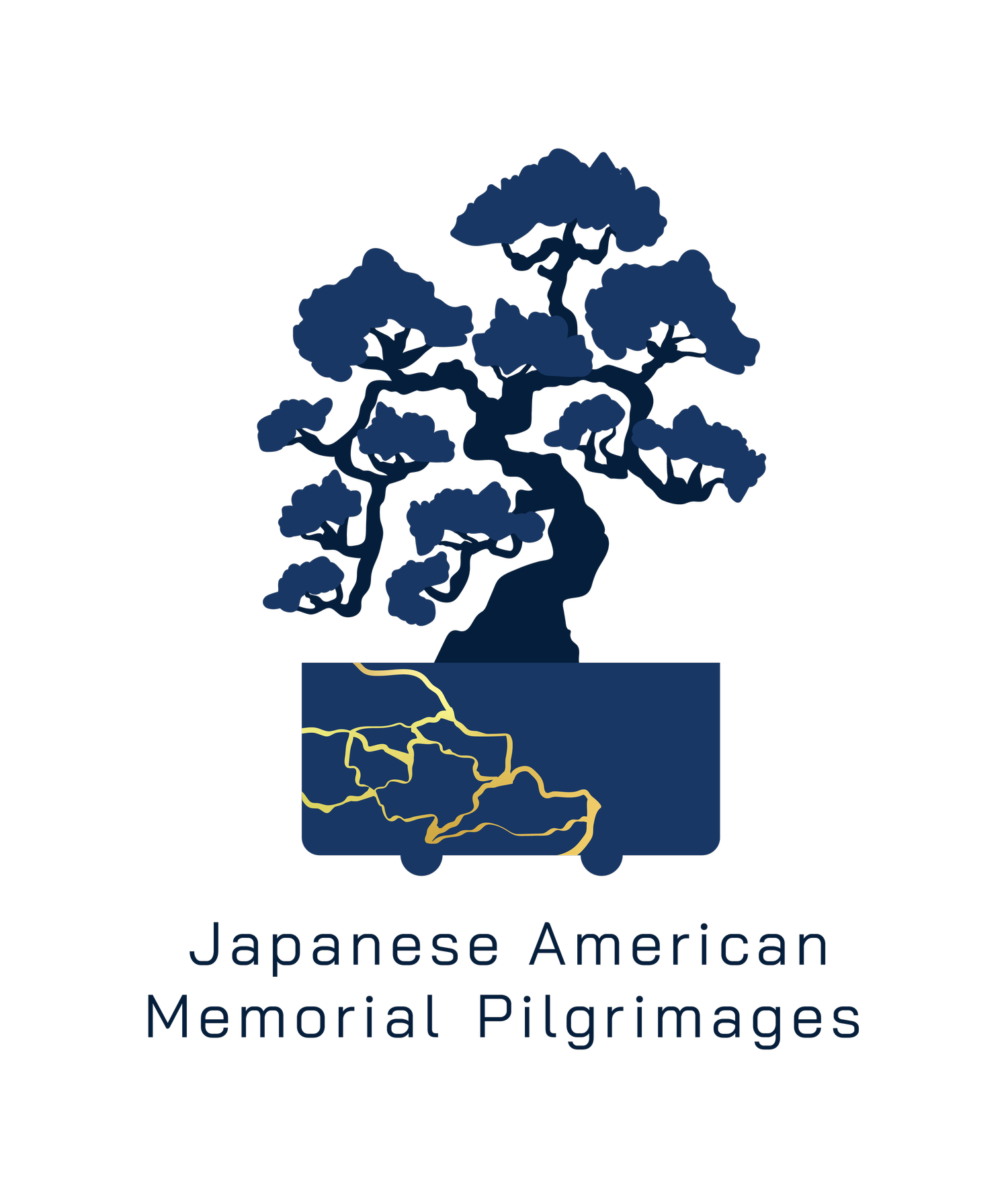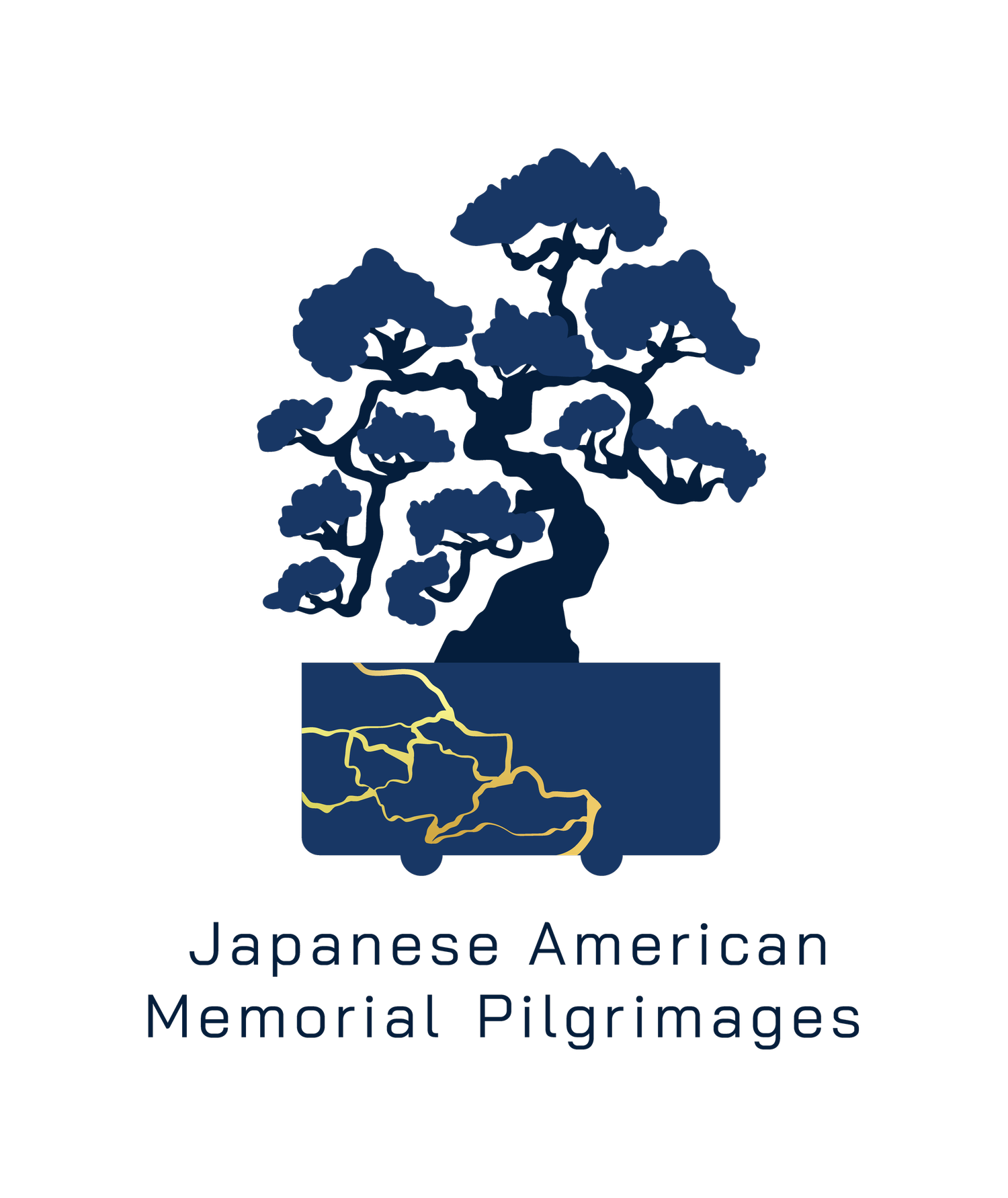
The planners of the pilgrimage thought it would be fitting to have on this special day of remembrance a mini Obon festival. Typically celebrated in July or August, Obon (お盆) is a centuries-old festival tradition rooted in a fusion of traditional Japanese beliefs and Japanese Buddhist practices of honoring ancestral spirits. Bon Odori (盆踊り) is the dancing practice that has become closely associated with the Obon festival, acting as a central feature of the celebration. Chochin (提灯), paper lanterns, are hung to guide the spirits while the Bon Odori are performed.
Obon and Bon Odori have been important parts of the Japanese American experience since the early 1930s when the first Obon festivals were held in San Francisco and Los Angeles, providing Japanese Americans with a time to remember and celebrate the spirits of ancestors. Songs such as Tanko Bushi (炭坑節) and Tokyo Ondo (東京音頭), both danced today, are among a large canon of songs typically heard at Obon festivals throughout the country. Tanko Bushi is sometimes known as the coal miner’s dance, and Tokyo Ondo is often the final song danced.
Bon Odori is a tradition that welcomes everyone to join in and dance regardless of dancing experience. Bon Odori has become closely associated with live taiko drumming in the USA. We invite you to join in our mini Obon today to honor the spirits of our ancestors incarcerated at Jerome and Rohwer.
We’d like to thank dancer and Rohwer descendant Marsha Endo Johnson, Jerome descendant Mary Ishimoto Morris, and Julie Abo who together organized today’s Bon Odori.
Taiko is the ancient art of Japanese drumming. Solo taiko playing is an ancient art form believed to be over 2000 years old. Over the centuries solo taiko have been used in religious, military, festival, Kabuki (theater,) and court roles. In 1951 Daihachi Oguchi developed group taiko, known as Kumi-daiko, and started the first taiko group, Osuwa Daiko.
American Kumi-daiko began in California, with Seiichi Tanaka's San Francisco Taiko Dojo in 1967 and in Los Angeles with Kinnara Taiko in 1969. Both groups are still going strong, and have inspired thousands of other Americans to join taiko groups all across the US. The LA based group Taikoproject won the Tokyo International Taiko Contest in 2005, the first non-Japanese group to ever win that title. In 2013 Japanese Taiko Maker Asano founded Asano Taiko US and the Los Angeles Taiko Institute, thereby opening the first retail Taiko store in the United States by a major taiko manufacturer.
We’d like to welcome Central Arkansas Taiko of Little Rock, AR, to our Bon Odori today. Special thanks to guest drummer and Rohwer descendant Aeko Yoshikawa for organizing the live taiko drumming.
Central Arkansas Taiko members: Emilee Baker, Tim Bartlett, Emily Housden, Helen McMillin, Ricky Rivera, Lane Tupa, Shannon Webb, and Mindy Xie.
Formed in 2022 by Helen McMillin and Shannon Webb, Central Arkansas Taiko is the only taiko group in the state. We seek to bring the joy of taiko to everyone who wishes to hear or play. We try to practice gratitude, and find connection through taiko. We meet weekly at First United Methodist Church in downtown Little Rock, our website is www.taikoark.com.
We will be playing Matsuri Daiko, or festival drumming. Matsuri is a very traditional piece consisting of five phrases and intended to accompany festival dancing. As such there is a lot of improvisation involved. This piece involves playing primarily naname, or slant drum.
We will also be playing Dokokara by Yuta Kato. Written in 2007, Dokokara was commissioned, performed, and generously shared by Zenshin Daiko. Played on the upright, or beta style, drum, Dokokara involves passing the melody around the ensemble, and features the ka sound, or the sound made when the bachi (drumstick) hits the rim of the drum.
Shitamachi no Furu, or Downtown Swing, written by CAT founder Helen McMillin, is a piece paying tribute to the history and spirit of the church that generously gives us our rehearsal space. When other churches and businesses were leaving downtown, First UMC stayed in their community, to serve and nurture their neighbors.


